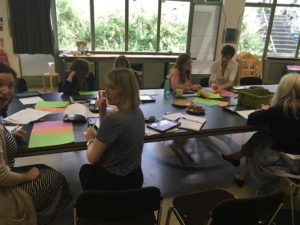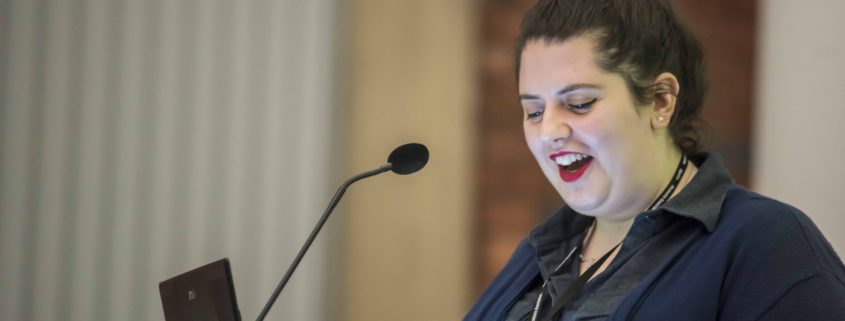Guest blog by Fran Riando – Unlocking the Geffrye
 The Geffrye explores the home and the way people live. Our collections show how homes have been used and furnished over the past 400 years, reflecting changes in society and behaviour as well as style, fashion and taste.
The Geffrye explores the home and the way people live. Our collections show how homes have been used and furnished over the past 400 years, reflecting changes in society and behaviour as well as style, fashion and taste.
The Geffrye is a much-loved gem in the lively and creative Hoxton area of London – historically a centre for furniture-making and market gardening. Set in 18th-century almshouses and surrounded by gardens, it is often described as an oasis in the heart of the city.
People volunteer across the museum leading tours of the restored almshouse, helping maintain the gardens, supporting family learning activities, community sessions and events, collection and documentation activities, helping our development team with research, supporting the communication team supporting the volunteer programme itself.
Volunteering has been steadily growing over the past 5 years, with the number of contributed volunteer hours rising from 2110 in 2013/14 to 3069 in 2016/17. Our volunteers suggested that we should embrace digital technology to help with communication and certain volunteer management functions like rotas.
When researching I came across Volunteer Makers. Instantly struck by the idea of having lots of different ways for people to get involved, including micro volunteering and how technology could support this and help to build the community, I got in touch. Volunteer Makers would really help us to think differently about volunteering, especially moving into a period when the Museum will be closed as part of a transformational redevelopment project, Unlocking the Geffrye.
We have now planned for Volunteer Makers, started to implement the plan and are in a period of consultation with the current team which will be followed by a public launch.
This project has helped us learn a lot so far, here are some of the top things that have helped us get to this point:
1. We have developed our Volunteer Maker’s strategy as part of our wider strategy for volunteering at the museum. During meetings we developed a set of values for the programme, which helped to focus discussions and decision making throughout.
2. We have tried to work collaboratively across the organisation; in practical terms this has meant having a clear idea of time scale and key outcomes at different stages has been really vital. This has helped to make sure that people have the information they need to contribute to decisions, reflect and feedback at each stage, whilst planning time to act on feedback where possible. We used a simple table to help keep track of this which allowed us to adjust the plan as needed. (You can get a copy of the template we created for planning from Volunteer Makers).
3. Getting the whole organisation involved at all levels has been really important. Planning multiple opportunities for people to get involved and think about what aspects of Volunteer Makers might appeal to the motivations of different teams. Do not get disheartened if people don’t immediately get involved, if you have opportunities throughout the project people can get involved more easily when things become less abstract. I have planned to share Volunteer Makers with the whole team including those who haven’t been involved in a staff meeting. I plan to get everyone attending to contribute ideas for challenges in their area of work.
4. It has been beneficial having the communication team and current volunteer team involved. Spending the time to get the communication team is worth it, ensure they know what opportunities they have to feed in, and when decisions will be final, this means they know what meeting they have to be at! This team caught on to the micro volunteering aspects of Volunteer Makers quickly, so having meetings where you mix teams to think about ideas has worked well. Volunteers are the people that you want to be able to use and embrace the site, so working with them is important. One of our volunteers, Maja, attended a meeting about branding, during which she came up with the name and tag line for the site after members of staff had talked about it for quite a while. Volunteers are able to bring fresh perspective which has been really beneficial.
Fran Riando, Audience Development Coordinator: Volunteers & Communities
If you found this helpful then see our other Pioneer Blogs from Jessica Hartshorn and Hannah Mather.




Leave a Reply
Want to join the discussion?Feel free to contribute!